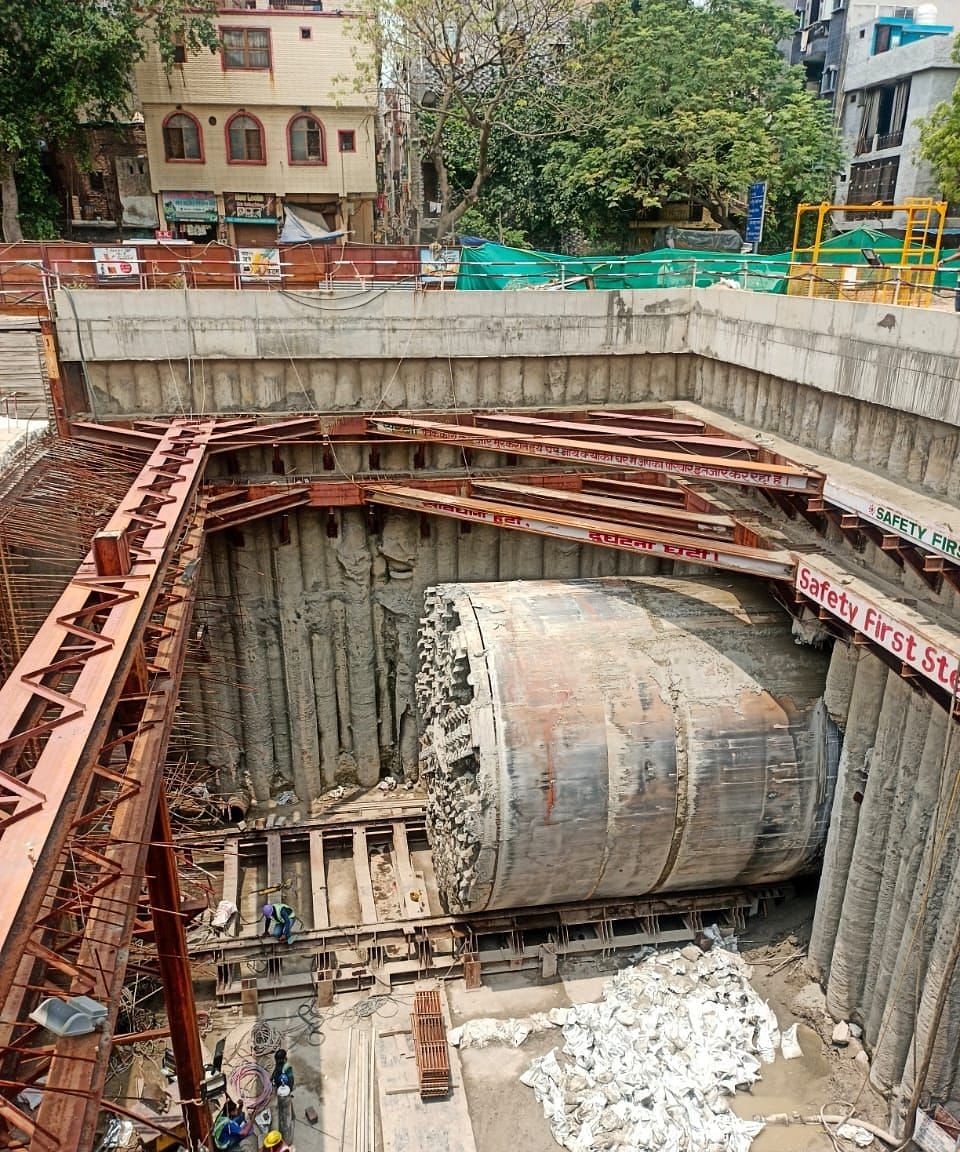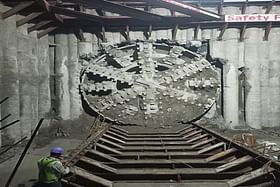Ahead of the commissioning of the priority section, NCRTC achieved a major milestone with the completion of tunnelling in the Delhi section of the Delhi-Ghaziabad-Meerut RRTS corridor.
With this, the construction has now entered the next phase. Track laying and installation of overhead electric equipment (OHE) in the tunnels will commence soon.
Tunnel construction of the underground section in Delhi commenced in February 2022, when tunnel boring machine (TBM) Sudarshan 4.1 started tunnelling from Anand Vihar towards New Ashok Nagar.
Sudarshan 4.2 was launched soon after in April for tunnelling its parallel tunnel. These parallel tunnels are the longest tunnel in Delhi made by any TBM and are about 3 km each.
With continuous efforts of NCRTC team and 24×7 construction, Sudarshan 4.1 made the breakthrough from the tunnel retrieval shaft constructed at Khichdipur, Delhi in just over a year in April 2023.
Sudarshan 4.2 has also completed tunnelling for its parallel tunnel and made a breakthrough recently. This marked the completion of the tunnelling in the underground section of the corridor in the National Capital.
Apart from these, two more Sudarshan, 4.3 and 4.4 were also launched from Anand Vihar for tunnelling 2-km-long parallel tunnels towards Sahibabad RAPIDX station for the Delhi-Ghaziabad section in June and October 2022, respectively.
One of these, Sudarshan 4.3 made a breakthrough from the retrieval shaft constructed near Vaishali Metro station in May 2023. The other TBM, Sudarshan 4.4 has also completed about 75 per cent of the tunnelling and will soon make a breakthrough.

Regional Rapid Transit System (RRTS) tunnels have a diameter of 6.5 metre which is highly optimised as compared to global benchmarks of tunnels for a similar design speed of 180 kmph, with wider and higher rolling stock.
Tunnelling in the Delhi section was a complex and challenging task. Going towards New Ashok Nagar, the underground tunnel passes very close to the existing metro viaduct piling structures, in addition to the expressways and non-engineered buildings of Patparganj and Khichdipur. All these challenges were tackled successfully by executing strategic planning and innovative methods.
In order to construct these tunnels, high-precision pre-casted tunnel segments have been used which will ensure a long tunnel life. The tunnel segments of the Delhi section are being cast at NCRTC’s casting yard established at Kadkaddooma, Delhi, with assured quality control.
NCRTC is targeting to open the entire 82-km-long Delhi-Ghaziabad-Meerut Corridor for the public by 2025. Before that, it will operationalise a 17-km-long priority section between Sahibabad and Duhai Depot shortly.


